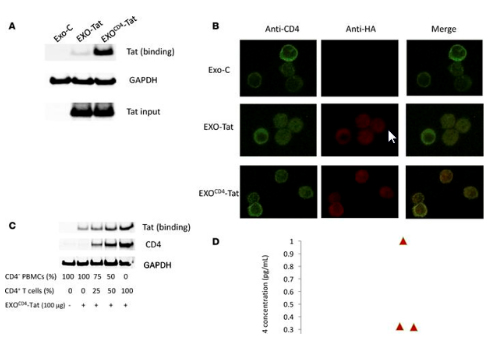Dr. Ramratnam is Associate Professor of Medicine, Chief Scientific Officer at Lifespan, and Vice Chair of Research for Brown Medicine. The main focus of the Ramratnam laboratory is HIV-1 persistence despite prolonged and effective antiretroviral therapy. With clinical partners, they are following a cohort of individuals who have been on chronic antiretroviral therapy (>10 years) and are virologically suppressed. Peripheral blood is tested to evaluate various HIV-1 purging strategies. Of late, the laboratory has focused on using bioengineered exosomes to specifically target cells expressing the CD4+ T lymphocyte receptor and thereby reactivate latent HIV-1. In parallel, they have developed a Dual Affinity Re-Targeting (DART)protein that can bind HIV-1 infected cells to immune killer cells. Recombinant viral vectors have been engineered to produce both exosomes and DART, and will be tested in vivo using HIV/SIV animal models.
Keywords: HIV persistence, latency, recombinant viral vectors, exosomes, DART
Key Publications:
Exosomal Tat protein activates latent HIV-1 in primary, resting CD4+ T lymphocytes.
Tang X, Lu H, Dooner M, Chapman S, Quesenberry PJ, Ramratnam B.
JCI Insight. 2018 Apr 5;3(7). pii: 95676. doi: 10.1172/jci.insight.95676 PMID: 29618654
Lactobacillus-derived extracellular vesicles enhance host immune responses against vancomycin-resistant enterococci.
Li M, Lee K, Hsu M, Nau G, Mylonakis E, Ramratnam B.
BMC Microbiol. 2017 Mar 14;17(1):66. doi: 10.1186/s12866-017-0977-7. PMID: 28288575
Potential biomarkers to detect traumatic brain injury by the profiling of salivary extracellular vesicles
Cheng Y, Pereira M, Raukar N, Reagan JL, Queseneberry M, Goldberg L, Borgovan T, LaFrance WC Jr, Dooner M, Deregibus M, Camussi G, Ramratnam B, Quesenberry P.
J Cell Physiol. 2019 Jan 15. doi: 10.1002/jcp.28139 PMID: 30644102
Stem-loop binding protein is a multifaceted cellular regulator of HIV-1 replication.
Li M, Tucker LD, Asara JM, Cheruiyot CK, Lu H, Wu ZJ, Newstein MC, Dooner MS, Friedman J, Lally MA, Ramratnam B.
J Clin Invest. 2016 Aug 1;126(8):3117-29. doi: 10.1172/JCI82360. Epub 2016 Jul 25. PMID: 27454292
Proteomic Characterization of Exosomes from HIV-1-Infected Cells.
Li M, Ramratnam B.
Methods Mol Biol. 2016;1354:311-26. doi: 10.1007/978-1-4939-3046-3_21.
PMID: 26714721
Images:

(A) Inclusion of a CD4+ binding moiety in exosomes (EXOCD4-Tat) increased CD4+ T cell binding. Control Exosomes (Exo-C), EXO-Tat, or EXOCD4-Tat exosomes were incubated with CD4+ T cells for 24 hours, and Western blot was used to compare intracellular Tat levels in cells treated with EXO-Tat or EXOCD4-Tat exosomes. GAPDH was used as a cell lysate loading control. Western blot band intensity was measured using the Licor Odyssey software. (B) EXOCD4-Tat exosomes specifically target CD4+ T cells. Exo-C, EXO-Tat, or EXOCD4-Tat exosomes were incubated with PMBCs from healthy donors for 24 hours. The supernatants were removed by centrifugation. The cell pellets were prepared and probed with fluorescent conjugated antibodies, which recognize CD4 (green) or HA-tagged Tat (red). The top row shows CD4 staining (green). The middle row shows CD4 staining (green), Tat staining (red), and the merge of green and red. The bottom row shows CD4 staining (green), Tat staining (red), and the merge of green and red. The much stronger merged color orange indicates Tat protein containing exosomes binding to CD4+ T cells. Total magnification × 100. (C) A representative data set of 2 independent Western blot results is shown here, indicating EXOCD4-Tat exosomes specifically target CD4+ cells. CD4– PBMCs were prepared by depleting CD4+ cells from PBMCs using CD4 Dynabeads. CD4+ T cells were isolated from PBMCs using Dynabeads Untouched Human CD4+ T cells kit. CD4– PBMCs and CD4+ T cells were mixed at the indicated ratio and incubated with or without the same amount of EXOCD4-Tat exosomes (100 μg) for 24 hours. Cell-bound exosomes were measured by Western blot. (D) EXOCD4-Tat exosomes reactivated latent HIV-1 from 3/3 patient samples, while control
Contact Information:
One Hoppin Street, Suite 4.200
Providence, RI
Phone: 401-444-2871
Email: BRamratnam@Lifespan.org
Administrative Manager: CMarshall@Lifespan.org
Additional links of interest:
Chief Science Officer, Lifespan
https://www.lifespan.org/centers-services/cobre-ccrd
Vice Chair of Research, Brown Medicine
www.brownmed.org
Medical Director, Lifespan Clinical Research Center (CRC) (NIH5U54GM115677)
https://www.brown.edu/initiatives/translational-research/home
